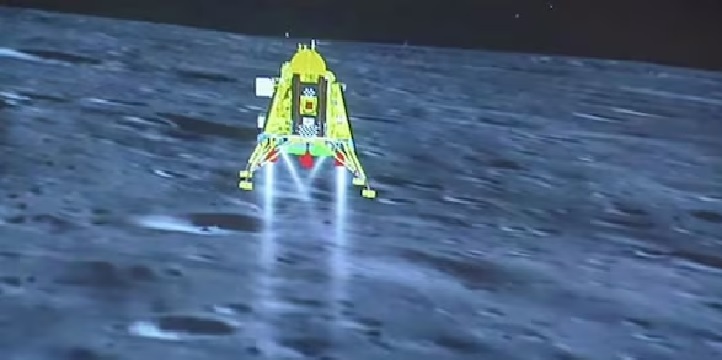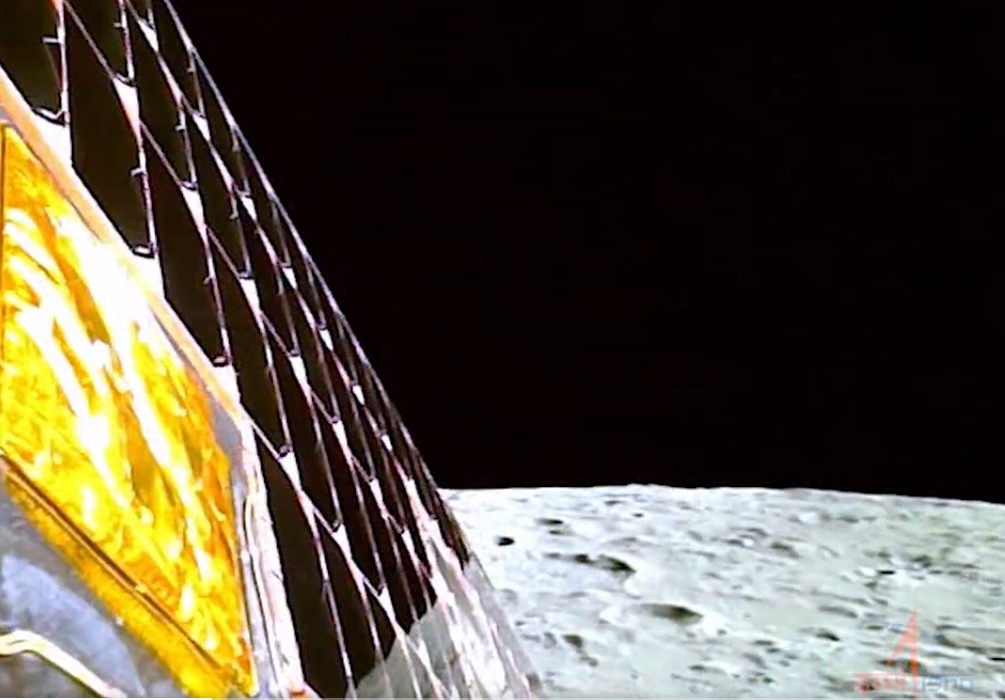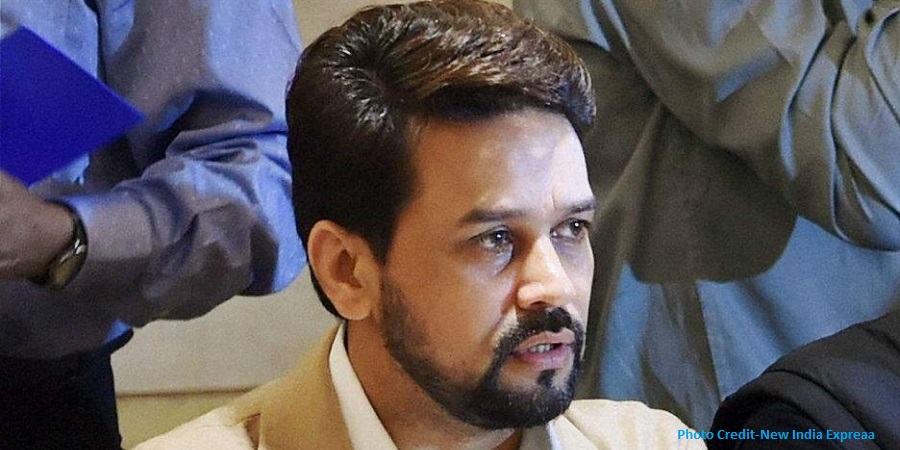Chandrayaan 3 Moon Landing

A tryst with the moon that kept India trying for over a decade. This was finally achieved on August 23, 2023.
After centuries of rigorous colonialism, it took a little time after independence to establish the Indian Space Research Organization (ISRO) in 1969. The founding members were Vikram Sarabhai and former president of India Dr. APJ Abdul Kalam. ISRO was established on the 23rdIndependence day of India.
|| By Tanishq Mohan
It was the age of the space race during the Cold War among two superpowers: the USA and the erstwhile Soviet Union. The United States created a scientific landmark in human history with its Apollo 11 mission. On July 20, 1969,‘Neil Armstrong’ along with his companion ‘Edwin Eldrin’ successfully walked on the moon’s surface. Although it is arguable if the mission was a part of the space race or completely research-driven. India launched its first satellite “Aryabhatta” in 1975. The orbital life of the Aryabhatta satellite was almost 17 years.
India began its space journey in 19 by successfully sending the squadron leader Rakesh Sharma in the near space. Rakesh Sharma was accompanied by two Soviet cosmonauts, Yuri Malenchenko and Gennady Strekalov. On April 3, 1984, Indira Gandhi, the then Prime Minister of Indiagot on a phone call with him from Earth. She asked him in Hindi- “Upar se Bharat kaisa dikhta hai aapko?” this translates to How does India look like from space? To this Squadron leader Rakesh Sharma replied “Ji mai bagair kisi jijhak ke keh sakta hu, Saare Jahan se Accha” it translates to- I say it with full confidence that the most land beautiful in the world.

ISRO started its moon safari by launching the Chandrayaan1 in 2008. The spacecraft orbited the moon for chemical, mineralogical, and photo-geologic mapping of the moon. The data given by Chandrayaan 1 provided evidence of water particles at the surface of the moon. It was ground-breaking data noted by Chandrayaan 1. It caught the world’s attention and brought up expectations about life sustenance on the Moon.
Chandrayaan 2
Chandrayaan 2 mission was highly complex, representing a significant technological leap compared to the previous missions of ISRO. It comprised an Orbiter, Lander, and Rover to explore the unexplored South Pole of the Moon. In September 2019, India embarked on its 2nd journey to the moon. Chandrayaan 2 mission was going well until the lander lost contact with the control center. The last traced height was 2.1 kilometers from the lunar surface. It is believed that its lander generated more optimum thrust than required. It was a big setback butthe orbiter was placed successfully. It has provided valuable insights into the Moon’s surface, helping scientists understand its geology, mineral composition, and overall environment. Chandrayaan-2 is an Indian lunar exploration mission developed and launched by the Indian Space Research Organisation (ISRO). It was the second lunar exploration mission by India, following the successful Chandrayaan-1 mission in 2008.
Chandrayaan 3
It was the 3rd mission as the name tells. The politics stayed warm during this launch.Prime Minister Modi was on his official visit to France to attend the Bastille Day parade where he was also awarded the Legion of Honor, the highest honor in France.
The launch of the Chandrayaan 3 was a global attraction. It was launched on July 14, 2023. It took almost 40 days for it to reach the moon as per schedule.
The challenge in between came up from Roscosmos- the Russian Space research body. It launched its LUNA-25 mission on August 11 and was supposed to reach the lunar south pole before India. This was possible because LUNA-25 had enough fuel to enter the orbit of the moon in just one long boost. It was only on August 21 that it crash-landed like India’s Chandrayaan 2 in 2019.Was Russia in a hurry to become the first country to land on southern region? However, this crash brought back the excitement of people on social media for C3 to become the first to land on South Pole of the moon.
On August 21, the already revolving orbiter injected by C2got in the touch with lander. The orbiter gave a command prompted statement, “Welcome Buddy” to the ‘Vikram’ lander.
On August 23, billions of people awaited with fingers crossed for the soft landing of Vikram. The legs of the lander were made stronger than previous mission. The landing was scheduled for 6:04 PM IST. The most challenging part was to reduce lander’s velocity to zero to land softly.
ISRO chief “S. Somnath” said that the lander is designed with a failure-based approach. Now, after landing the mission will etch an impression of the national emblem of India and the official logo of ISRO. These logos are inscribed on the wheels of Pragyaan (rover). The Pragyaan rover has the capacity to travel up to 500 meters on the lunar surface. It can study the structure and composition of minerals in the soil of the moon. The mission will continue for 1 lunar day which is almost 2 weeks on Earth. It will study the seismic activities on the moon. The landing procedure was live broadcasted on YouTube. The live viewership was almost 8 million. The fun fact about it is that it has become the most-watched live stream ever on YouTube. The much-awaited achievement was followed by an online address of PM Modi from Johannesburg. He is there to attend the BRICS summit. With Chandrayan 3 India has become only 2nd country after China to land a rover on the moon.




